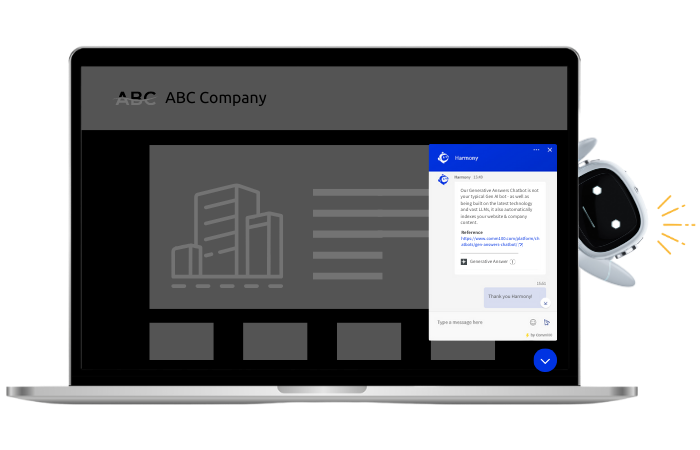If you’re reading this, you likely have either just implemented live chat on your website or are thinking about it. If you’re the latter, let us help you make your decision – 75% of people prefer live chat over any other channel and it leads to a 40% increase in conversion rate. Convinced now?
Whatever your industry, live chat is an incredibly effective channel – when used correctly. Advances in technology and shifts in customer preferences mean live chat best practices are often changing. We have been building live chat software for more than 10 years, helping brands like IBM, HomeTrust Bank, and Canadian Blood Services to deliver exceptional customer service. With this knowledge, we have put together the most up-to-date best practices for how to create the perfect live chat experience. Let’s get started and learn how to improve customer service in your organization.
1. Set up live chat across your site
Live chat is a highly effective communication channel, but only if your customers know about it! By making your live chat available across your website, visitors will see it on every page and be more likely to interact with you. They can ask for help anytime, anywhere, without having to leave their current webpage – whether this be on the checkout page when they are on the threshold of abandoning, or on a product page with a question about delivery costs.
Setting up live chat across your site also allows you to track visitors across your site so you can see what pages they have visited previously, and what page they are on in real-time. With this information, you can provide more personalized support to customers and treat them at a more individual level.
Top tip: For some companies, making live chat universal across the site may not be the best option. Adding live chat only on a specific page, like ‘Contact Us’, may be more effective. Some companies may even want to make live chat gated so that only users with certain privileges or account types have access to live chat. Before you make your decision, consider what you want your live chat to accomplish and the experience you want to create for your visitors.
2. Keep your average response time low
Part of the reason why live chat is so popular is because of its speed. Customers want answers, and fast – and live chat is the best tool to provide this. However, this means that keeping your chat concurrency (how many chats an agent can handle simultaneously) and average response time low. A high response time can lead to high abandonment and customer dissatisfaction. Here are some of the key steps you can take to keep your response times fast:
– Take advantage of canned messages: By using canned messages, customer service agents can greet customers swiftly and avoid repetitive typing for common answers.
– Set up a pre-chat survey: Before connecting with an agent, set up a short pre-chat survey to understand what your customer’s issue is and streamline the conversation. These surveys can also help to focus the customer and give them time to clarify their query.
– Deploy agent-facing AI: While your agent is chatting to the customer, Agent Assist, an AI-powered tool, monitors the conversation, interprets the questions being asked, and suggests answers to your agent in real-time so they don’t need to search for or type out the answer.
– Use rich media: You can save time by sending images, files, screenshots, or even how-to videos instead of writing out lengthy, complex responses. This can help make an issue clearer, which will help solve it faster. As they say, a picture is worth a thousand words…so save yourself the trouble of writing out lengthy responses!
Recommended for you: How to Reduce Your Average Handle Time Fast
3. Set clear time expectations
As we explained, responding to customers immediately is the goal, but this isn’t always going to be possible for most live chat agents. In some cases, setting clear and reasonable expectations is the next best live chat practice. Some small steps you can take are to:
– Be transparent with waiting time
If a customer must wait, let them know for how long, and what it is that they are waiting for. If you have to research their issue or transfer them to a specialist, let them know upfront – this way they’ll know that they’re in good hands, and that you haven’t forgotten about them.
– State your operational hours
If live chat support is available 24/7 for your business, say so! If not, your website should also reflect operational hours. Disable live chat whenever your business is closed or your agents are unavailable, so as not to mislead customers. Better still, allow your customers to leave a message and their email address and let them know you will reply as soon as you’re back online.
4. Use proactive chat wisely
Given the popularity of live chat, many companies want to proactively reach out to customers to increase engagement and give them a helping hand when they appear to need one. For example, a customer could be sat at the checkout for a considerable time, so a proactive message offering help could be the trigger that converts the customer. Proactive chats can either be manual, or automatic based on pre-set rules.
Adding proactive live chat to your site can also instill a sense of confidence in your visitors as it reveals an active commitment to communication between the company and its customers.
While proactive chat is a great tool to increase chat engagement, it can also ruin visitors’ experiences if not used properly. Visitors may feel intruded upon and annoyed by proactive chats that are too repetitive, too generic or robotic, or get in the way of reading the content on your website. Here’s how to avoid this and make proactive chat another weapon in your customer service toolkit:
– Plan automated chat rules
To avoid irritating customers, proactive chat requests should be based on research and analysis of the customer base, and should be sent out at the right time, in the right location, and with the right message, especially when automated. When setting rules to add proactive live chat to your website, pay attention to variables including customer time on site, current location, and navigation history.
For example, you can set your rules so that your proactive chat invitations get sent out automatically to customers who have more than $100 worth of merchandise in their shopping carts and have spent more than 5 minutes on the check-out page. By setting proactive automated chat rules, you can more efficiently contact target visitors who are most likely to become customers, which ensures that no single targeted visitor is missed.
– Review proactive reports
The best thing that you can do to optimize the effectiveness of proactive live chat is to use the proactive chat report to optimize your strategy. You can review the report of one specific proactive chat, or of all proactive chats, focusing on metrics such as the number of proactive chats sent to visitors, the number of proactive chats accepted by visitors, and the percentage of proactive chats that have been accepted by visitors.
Study these elements to learn whether your proactive chat strategy is working the way you intend it to and make any necessary changes to optimize it.
Powerful live chat software
Offer real-time, personalized, efficient support that your customers and agents will love at 1/3 the cost of voice support.
Learn more
Comm100 Live Chat
5. Build mobile-friendly live chat
We all know how glued today’s consumers are to their smartphones, so it’s increasingly important that when you add live chat to your website, it’s also accessible and easy to use on mobile devices. Here are the top two considerations you need to think about:
– Responsive Design
When viewing a website on a mobile device, chances are it will look different than it does from your computer screen. The original chat button and chat window that were designed to fit your desktop browser might take up too much space on a smartphone, making it difficult to navigate your mobile website.
Responsive design of your live chat is essential to an optimized mobile experience. Responsive design means that your live chat is automatically adjusted in size and layout with full mobile compatibility when visitors access your website through mobile devices, ensuring the best live chat experience.
– In-App Chat
Mobile apps are an essential service for most organizations. Instead of booking seats, watching videos, paying bills, and much more from a browser, more and more people are now performing these functions through dedicated mobile apps. In response to this, many companies are now adding in-app chat to their mobile apps. Users can contact customer service teams inside the company’s app instead of going to the website to search for the chat button. Adding in-app chat to mobile apps is easy thanks to developer-friendly SDKs (software development kits). With the creation of mobile-friendly live chat, your customers will be able to reach your customer service on the go—anytime, anywhere.
Wrap-up
Now that you are armed and ready with these live chat best practices, you need to make sure that you choose the right live chat vendor. Consider your use case carefully, understand which features your agents will need to deliver exceptional service, and use that as a baseline to choose your vendor.
Powerful live chat software
Offer real-time, personalized, efficient support that your customers and agents will love at 1/3 the cost of voice support.
Learn more
Comm100 Live Chat
Note: This blog post was originally published in July 2015. Because it is one of our most popular posts, we have updated it to include the latest research, up-to-date statistics and best practices in this topic.







